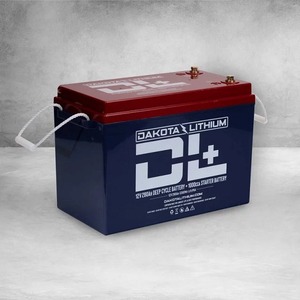More from Dakota Lithium Batteries
More in Politics
Related Blogs
Archives
Social Share
How is the Environmental Impact of Lithium Car Battery Production and Disposal Different From Lead-acid Batteries?
Body
The rise of electric vehicles (EVs) has sparked a critical discussion about their environmental impact, with a particular focus on lithium-ion batteries, the dominant technology powering them. While EVs boast zero tailpipe emissions, concerns linger about the environmental footprint of lithium battery production and disposal compared to traditional lead-acid batteries commonly used in internal combustion engine (ICE) vehicles. Let's delve deeper into the environmental differences between these two battery types.
Environmental Impact of Lead-Acid Batteries
Lead-acid batteries, known for their use in starter batteries for gasoline and diesel vehicles, have been around for over a century. While they offer a reliable and relatively inexpensive option, their environmental impact raises concerns:
Toxicity: Lead, a key component of the battery, is a highly toxic heavy metal. Improper disposal of lead-acid batteries can contaminate soil and water, posing health risks to humans and wildlife.
Limited Recycling: Although lead-acid batteries boast a high recycling rate (around 99% in the US), the recycling process itself can be energy-intensive and involve hazardous materials.
Shorter Lifespan: Lead-acid batteries typically have a lifespan of 3-5 years, requiring frequent replacements, which translates to a greater environmental footprint due to production and disposal cycles.
Environmental Impact of Lithium-Ion Batteries
Dakota lithium batteries offer several advantages over lead-acid batteries, including higher energy density, longer lifespans, and faster charging times. However, their environmental impact comes with its own set of challenges:
Mining and Processing: Extracting lithium and other key materials like cobalt can be environmentally damaging, leading to water pollution, habitat destruction, and potential human rights concerns in some regions.
Energy Consumption: The manufacturing process of lithium-ion batteries requires significant energy, and the environmental impact depends on the source of that energy. If reliant on fossil fuels, the carbon footprint of production increases.
Recycling Challenges: While technically recyclable, the complex nature of lithium-ion batteries and the lack of efficient and widespread recycling infrastructure pose challenges. Currently, only a small portion of lithium-ion batteries are recycled globally.
Comparing the Two
While both battery types have environmental drawbacks, a key difference lies in the nature of their materials and potential for harm. Lead, a critical component of lead-acid batteries, is inherently toxic, posing a significant environmental risk if not disposed of properly. Lithium, on the other hand, is not inherently toxic, and its environmental impact is primarily associated with the mining and processing stages.
Lead-acid vs. Lithium-ion: A Balancing Act
While lead-acid batteries pose a lower risk during disposal due to their non-toxic materials, their shorter lifespan and energy inefficiency lead to a higher overall environmental impact over time due to frequent replacements. On the other hand, lithium-ion batteries offer advantages like longer lifespans and higher energy efficiency, potentially translating to a lower overall environmental impact despite challenges in mining and recycling.
The Future of Battery Technology
The environmental impact of both battery types is an ongoing concern. As the demand for EVs grows, research and development are crucial in mitigating the environmental impact of lithium-ion batteries. This includes:
Sustainable Mining Practices: Implementing responsible mining practices that minimize environmental damage and prioritize ethical sourcing of materials.
Improved Recycling Technologies: Developing more efficient and cost-effective recycling processes to recover valuable materials from spent lithium-ion batteries.
Second-Life Applications: Exploring ways to repurpose used lithium-ion batteries for stationary energy storage applications before final recycling.












Comments